Gonçalo Paulo
When AI Co-Scientists Fail: SPOT-a Benchmark for Automated Verification of Scientific Research
May 17, 2025Abstract:Recent advances in large language models (LLMs) have fueled the vision of automated scientific discovery, often called AI Co-Scientists. To date, prior work casts these systems as generative co-authors responsible for crafting hypotheses, synthesizing code, or drafting manuscripts. In this work, we explore a complementary application: using LLMs as verifiers to automate the \textbf{academic verification of scientific manuscripts}. To that end, we introduce SPOT, a dataset of 83 published papers paired with 91 errors significant enough to prompt errata or retraction, cross-validated with actual authors and human annotators. Evaluating state-of-the-art LLMs on SPOT, we find that none surpasses 21.1\% recall or 6.1\% precision (o3 achieves the best scores, with all others near zero). Furthermore, confidence estimates are uniformly low, and across eight independent runs, models rarely rediscover the same errors, undermining their reliability. Finally, qualitative analysis with domain experts reveals that even the strongest models make mistakes resembling student-level misconceptions derived from misunderstandings. These findings highlight the substantial gap between current LLM capabilities and the requirements for dependable AI-assisted academic verification.
Transcoders Beat Sparse Autoencoders for Interpretability
Jan 31, 2025

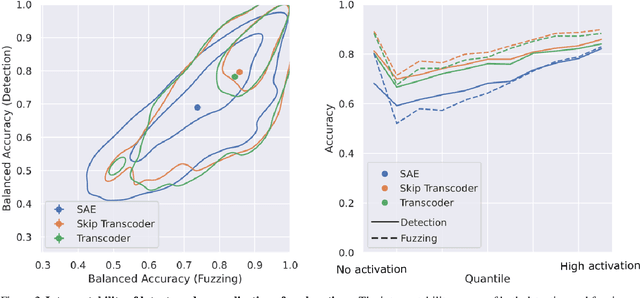

Abstract:Sparse autoencoders (SAEs) extract human-interpretable features from deep neural networks by transforming their activations into a sparse, higher dimensional latent space, and then reconstructing the activations from these latents. Transcoders are similar to SAEs, but they are trained to reconstruct the output of a component of a deep network given its input. In this work, we compare the features found by transcoders and SAEs trained on the same model and data, finding that transcoder features are significantly more interpretable. We also propose _skip transcoders_, which add an affine skip connection to the transcoder architecture, and show that these achieve lower reconstruction loss with no effect on interpretability.
Partially Rewriting a Transformer in Natural Language
Jan 31, 2025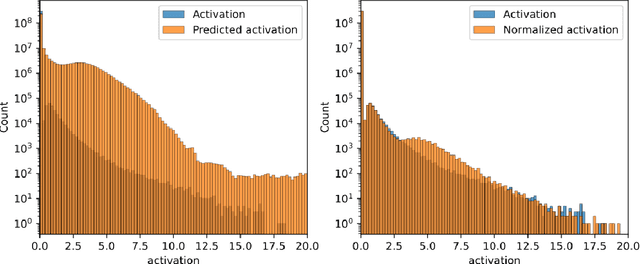
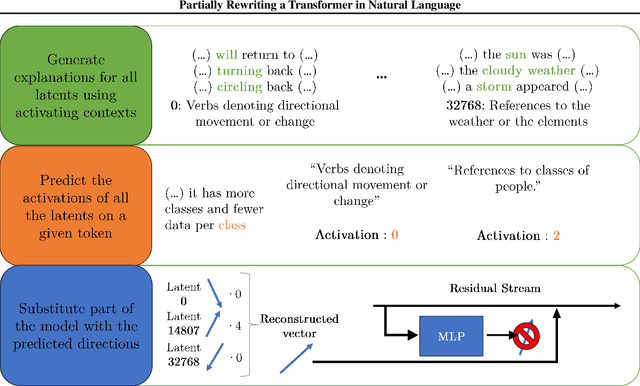
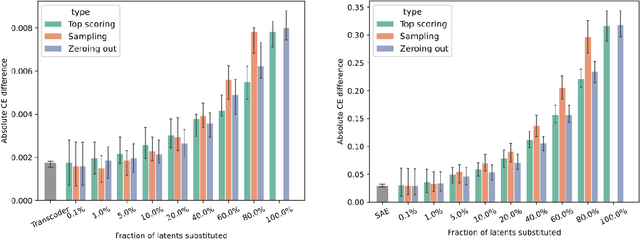
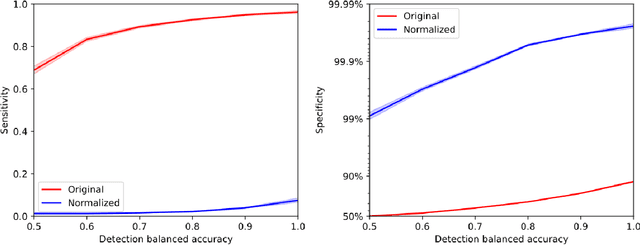
Abstract:The greatest ambition of mechanistic interpretability is to completely rewrite deep neural networks in a format that is more amenable to human understanding, while preserving their behavior and performance. In this paper, we attempt to partially rewrite a large language model using simple natural language explanations. We first approximate one of the feedforward networks in the LLM with a wider MLP with sparsely activating neurons - a transcoder - and use an automated interpretability pipeline to generate explanations for these neurons. We then replace the first layer of this sparse MLP with an LLM-based simulator, which predicts the activation of each neuron given its explanation and the surrounding context. Finally, we measure the degree to which these modifications distort the model's final output. With our pipeline, the model's increase in loss is statistically similar to entirely replacing the sparse MLP output with the zero vector. We employ the same protocol, this time using a sparse autoencoder, on the residual stream of the same layer and obtain similar results. These results suggest that more detailed explanations are needed to improve performance substantially above the zero ablation baseline.
Sparse Autoencoders Trained on the Same Data Learn Different Features
Jan 29, 2025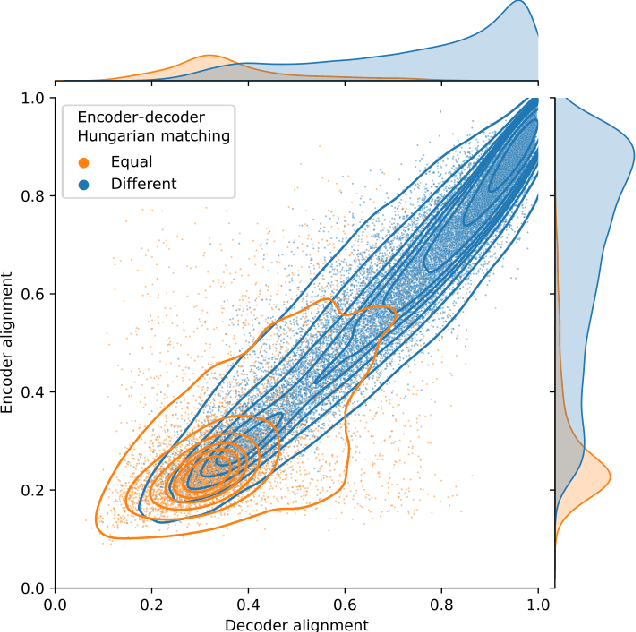
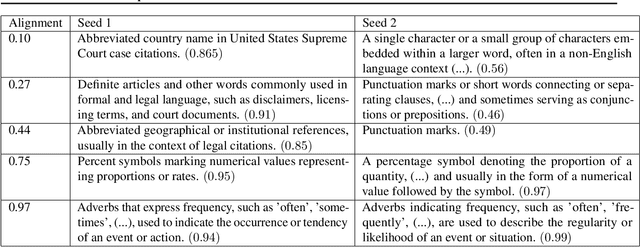
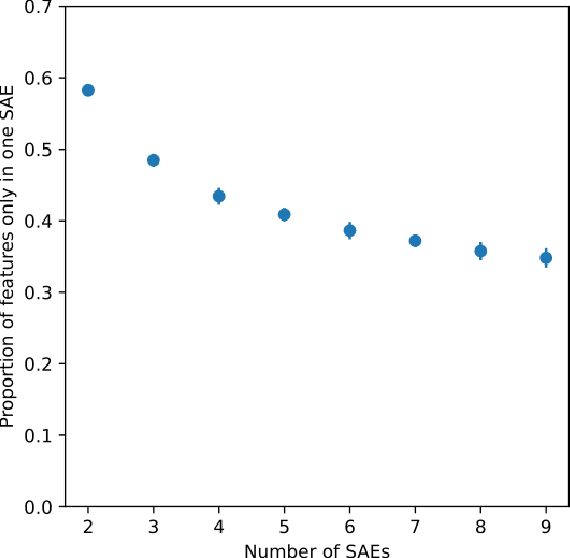
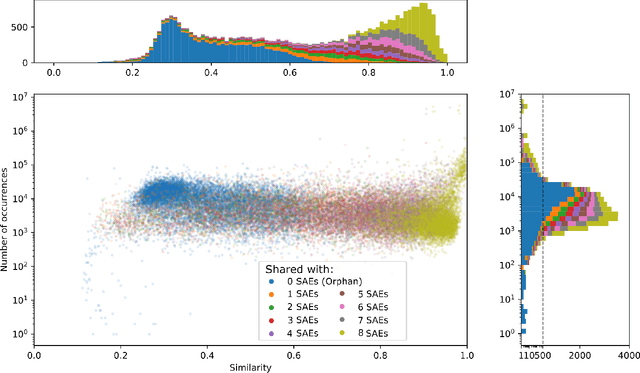
Abstract:Sparse autoencoders (SAEs) are a useful tool for uncovering human-interpretable features in the activations of large language models (LLMs). While some expect SAEs to find the true underlying features used by a model, our research shows that SAEs trained on the same model and data, differing only in the random seed used to initialize their weights, identify different sets of features. For example, in an SAE with 131K latents trained on a feedforward network in Llama 3 8B, only 30% of the features were shared across different seeds. We observed this phenomenon across multiple layers of three different LLMs, two datasets, and several SAE architectures. While ReLU SAEs trained with the L1 sparsity loss showed greater stability across seeds, SAEs using the state-of-the-art TopK activation function were more seed-dependent, even when controlling for the level of sparsity. Our results suggest that the set of features uncovered by an SAE should be viewed as a pragmatically useful decomposition of activation space, rather than an exhaustive and universal list of features "truly used" by the model.
Automatically Interpreting Millions of Features in Large Language Models
Oct 17, 2024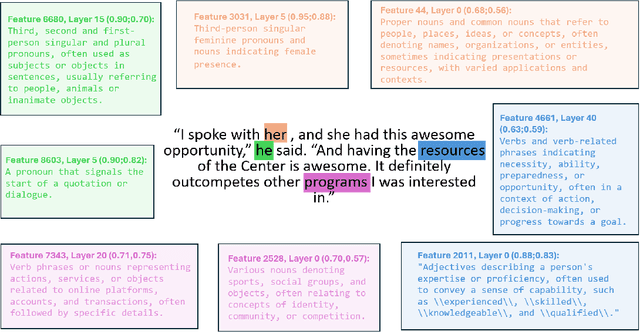

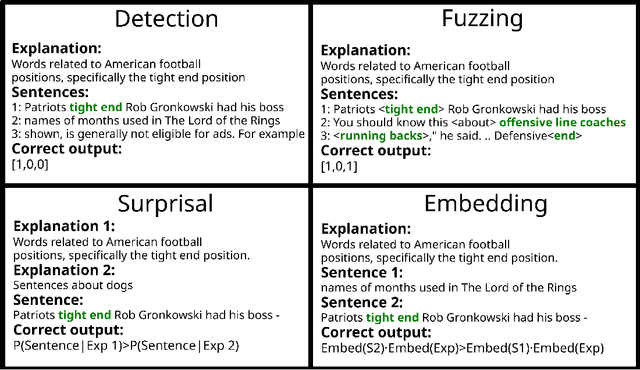
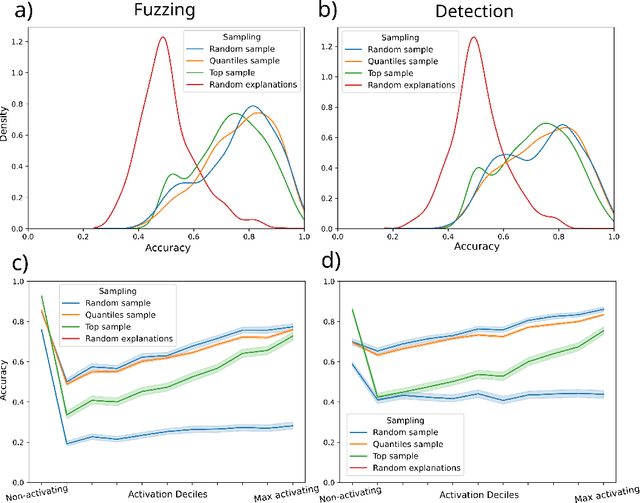
Abstract:While the activations of neurons in deep neural networks usually do not have a simple human-understandable interpretation, sparse autoencoders (SAEs) can be used to transform these activations into a higher-dimensional latent space which may be more easily interpretable. However, these SAEs can have millions of distinct latent features, making it infeasible for humans to manually interpret each one. In this work, we build an open-source automated pipeline to generate and evaluate natural language explanations for SAE features using LLMs. We test our framework on SAEs of varying sizes, activation functions, and losses, trained on two different open-weight LLMs. We introduce five new techniques to score the quality of explanations that are cheaper to run than the previous state of the art. One of these techniques, intervention scoring, evaluates the interpretability of the effects of intervening on a feature, which we find explains features that are not recalled by existing methods. We propose guidelines for generating better explanations that remain valid for a broader set of activating contexts, and discuss pitfalls with existing scoring techniques. We use our explanations to measure the semantic similarity of independently trained SAEs, and find that SAEs trained on nearby layers of the residual stream are highly similar. Our large-scale analysis confirms that SAE latents are indeed much more interpretable than neurons, even when neurons are sparsified using top-$k$ postprocessing. Our code is available at https://github.com/EleutherAI/sae-auto-interp, and our explanations are available at https://huggingface.co/datasets/EleutherAI/auto_interp_explanations.
Does Transformer Interpretability Transfer to RNNs?
Apr 09, 2024



Abstract:Recent advances in recurrent neural network architectures, such as Mamba and RWKV, have enabled RNNs to match or exceed the performance of equal-size transformers in terms of language modeling perplexity and downstream evaluations, suggesting that future systems may be built on completely new architectures. In this paper, we examine if selected interpretability methods originally designed for transformer language models will transfer to these up-and-coming recurrent architectures. Specifically, we focus on steering model outputs via contrastive activation addition, on eliciting latent predictions via the tuned lens, and eliciting latent knowledge from models fine-tuned to produce false outputs under certain conditions. Our results show that most of these techniques are effective when applied to RNNs, and we show that it is possible to improve some of them by taking advantage of RNNs' compressed state.
 Add to Chrome
Add to Chrome Add to Firefox
Add to Firefox Add to Edge
Add to Edge